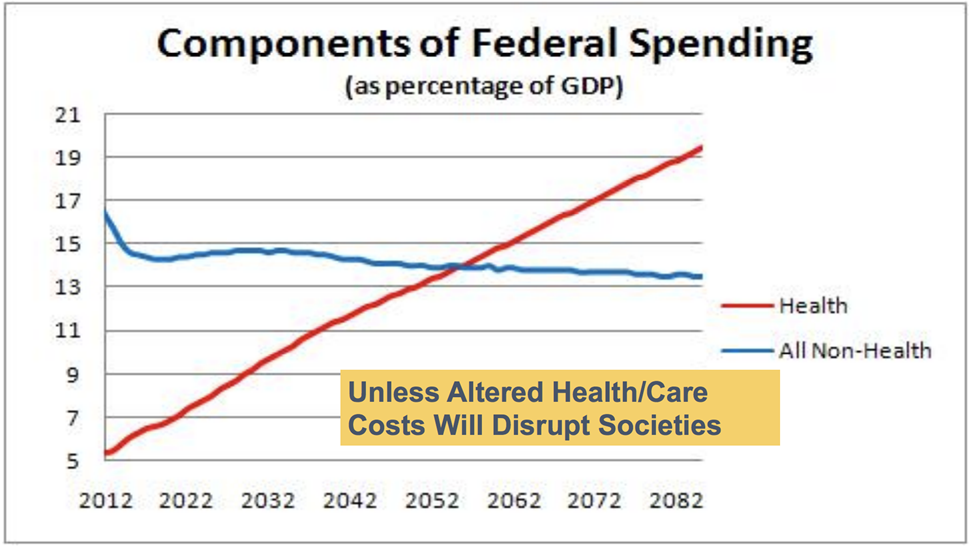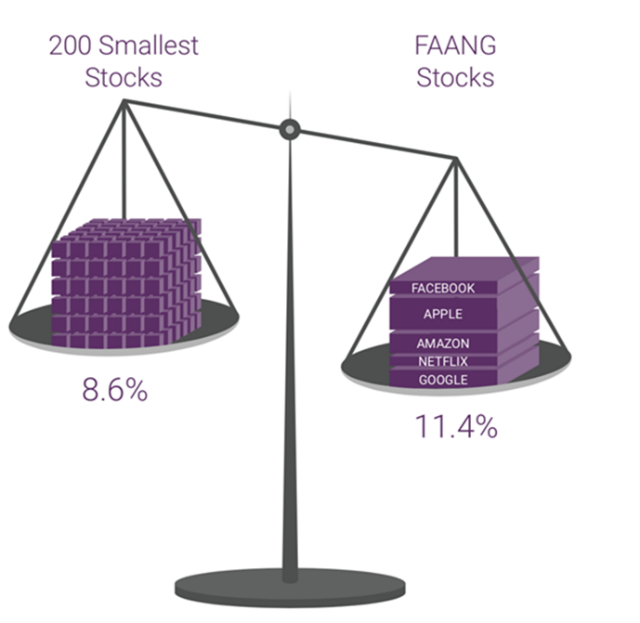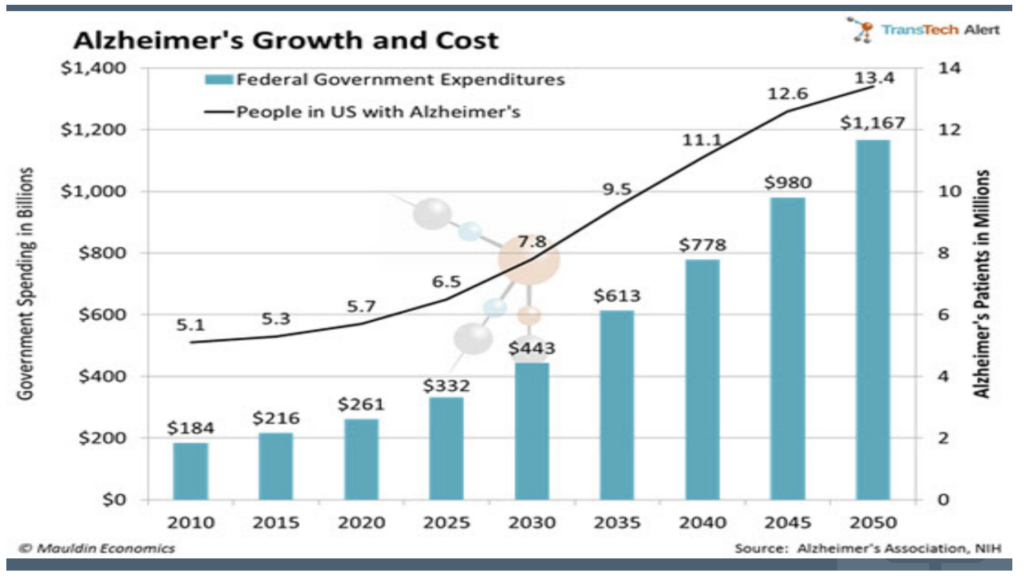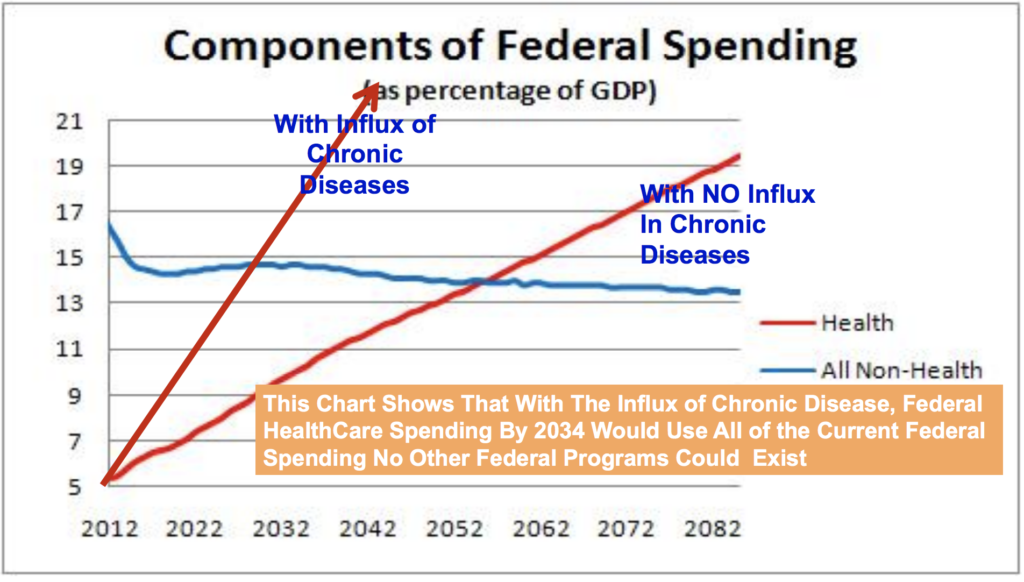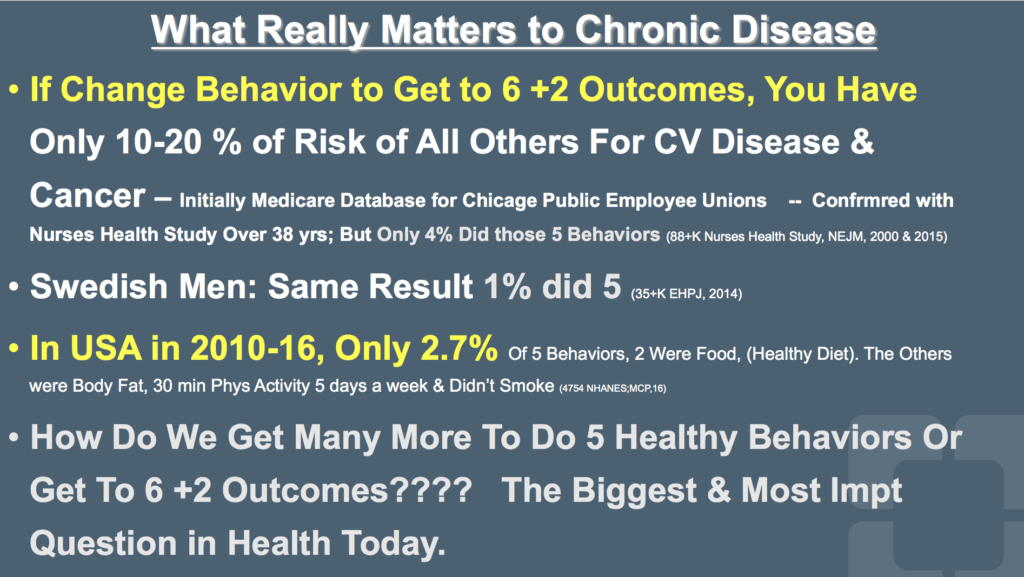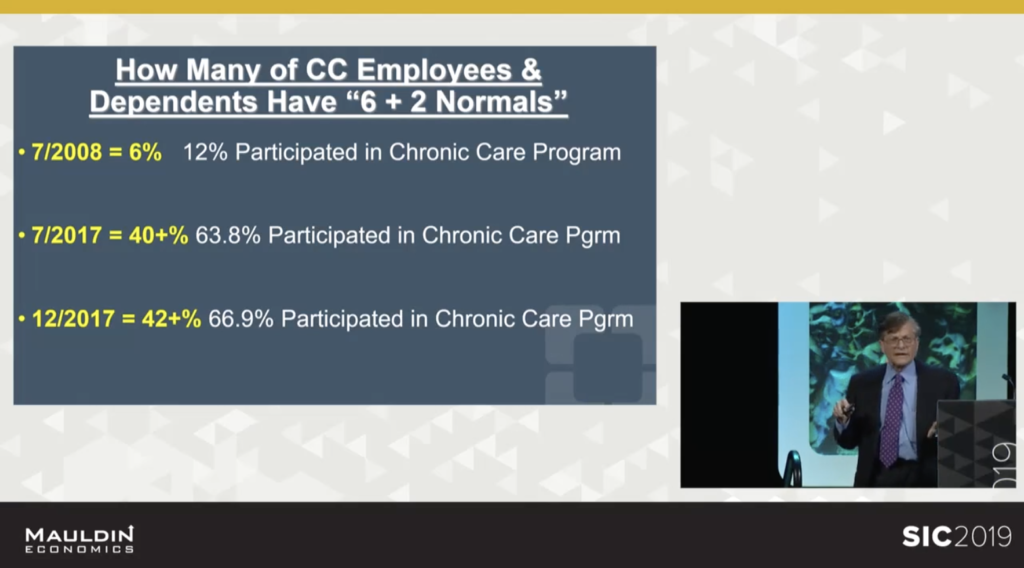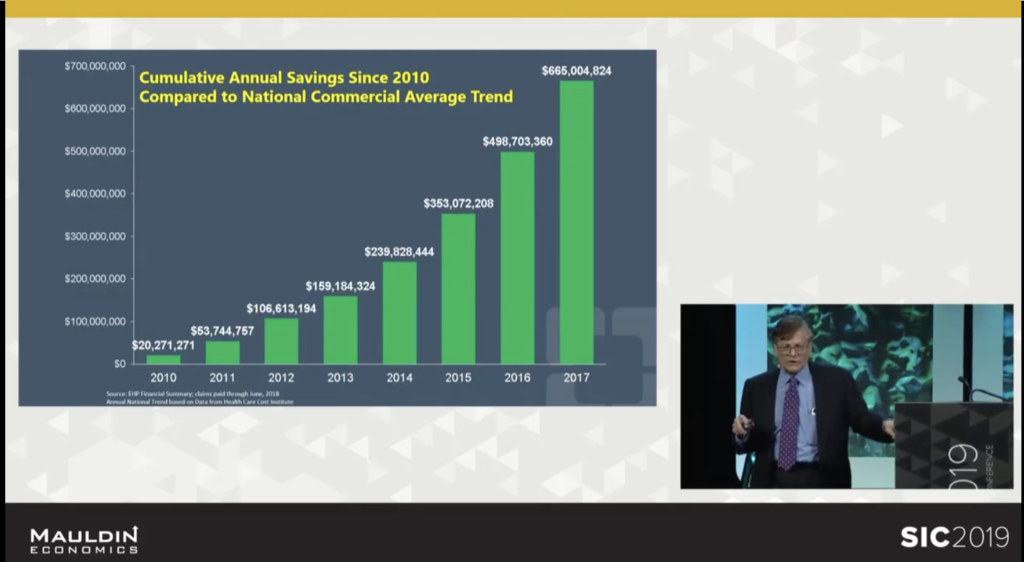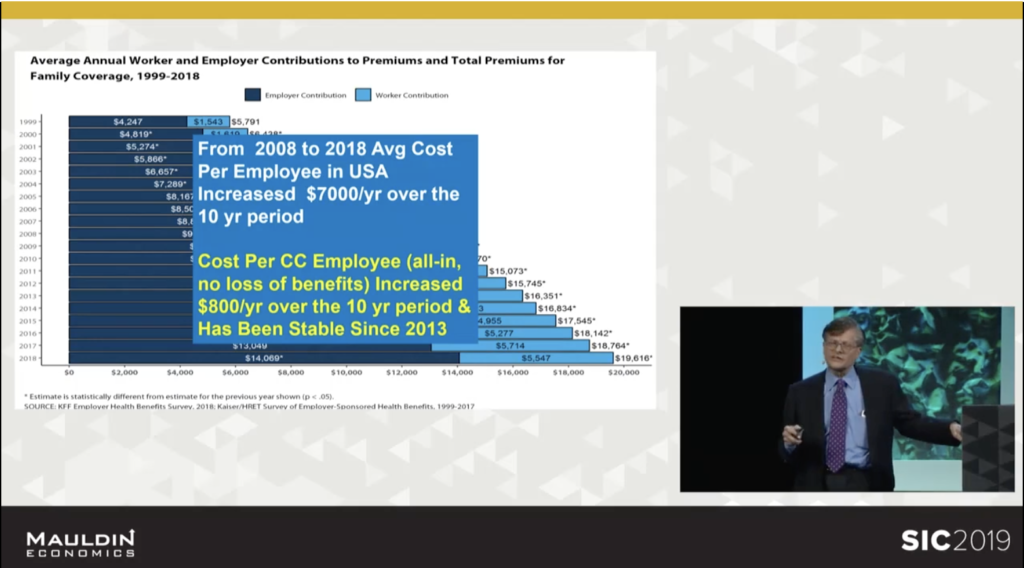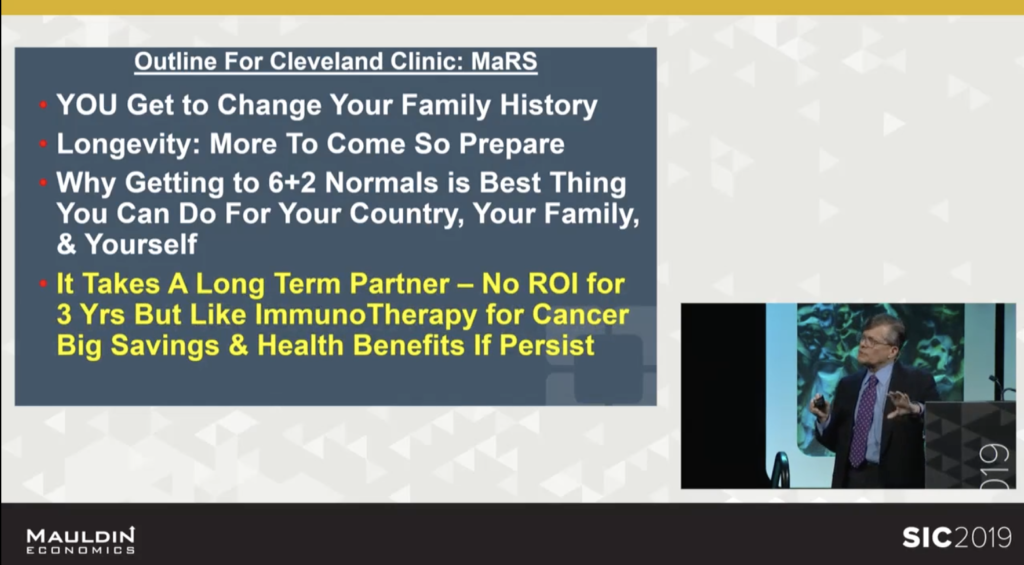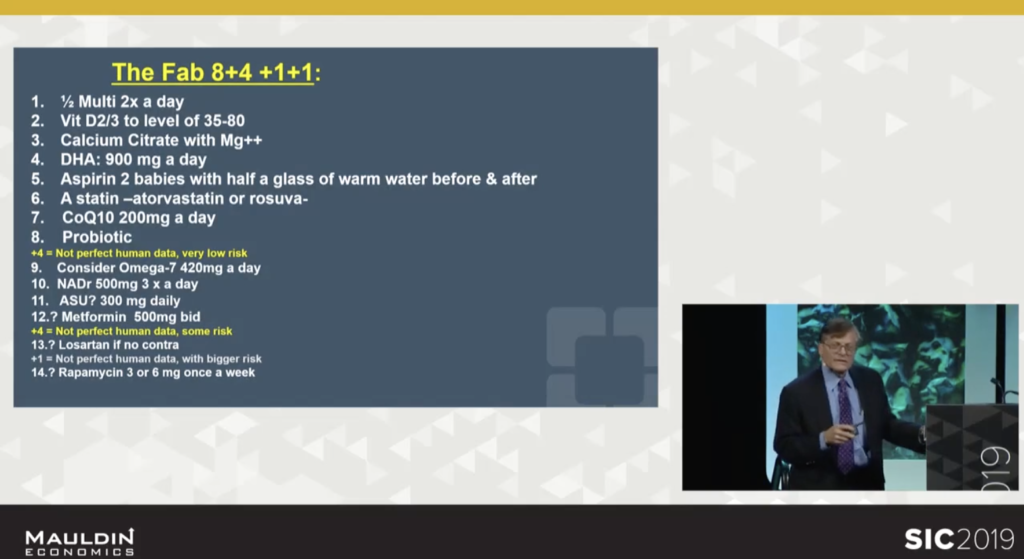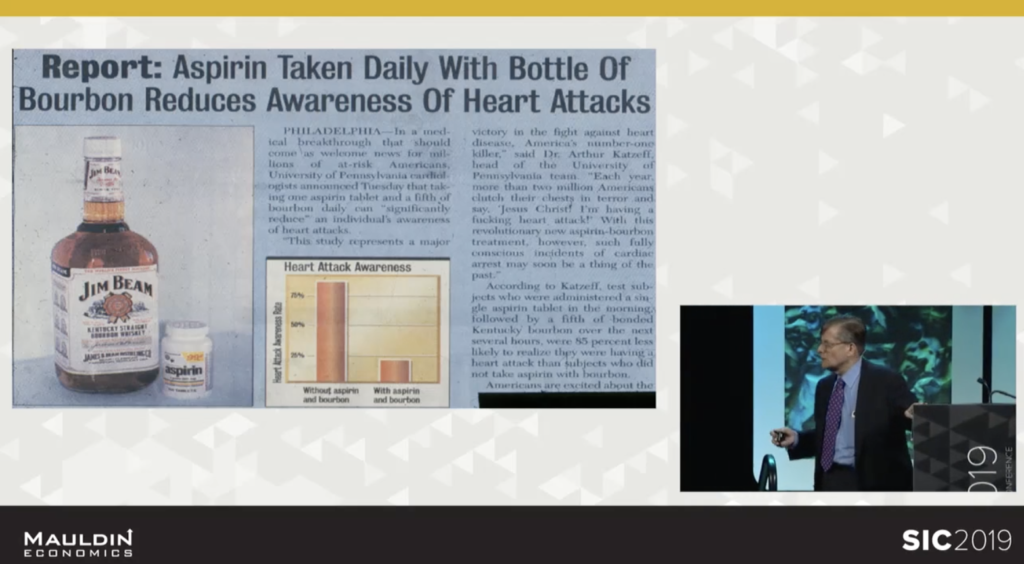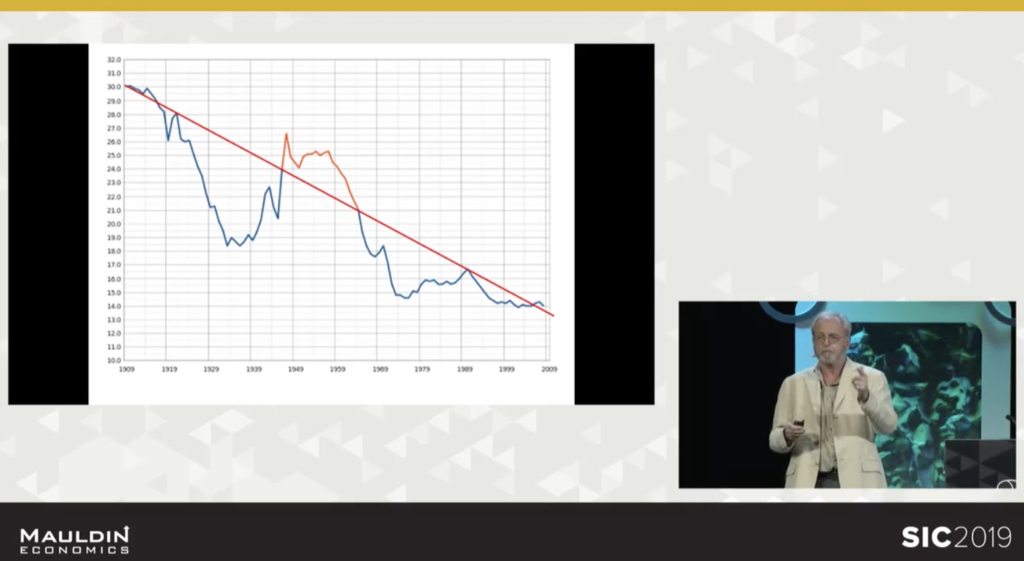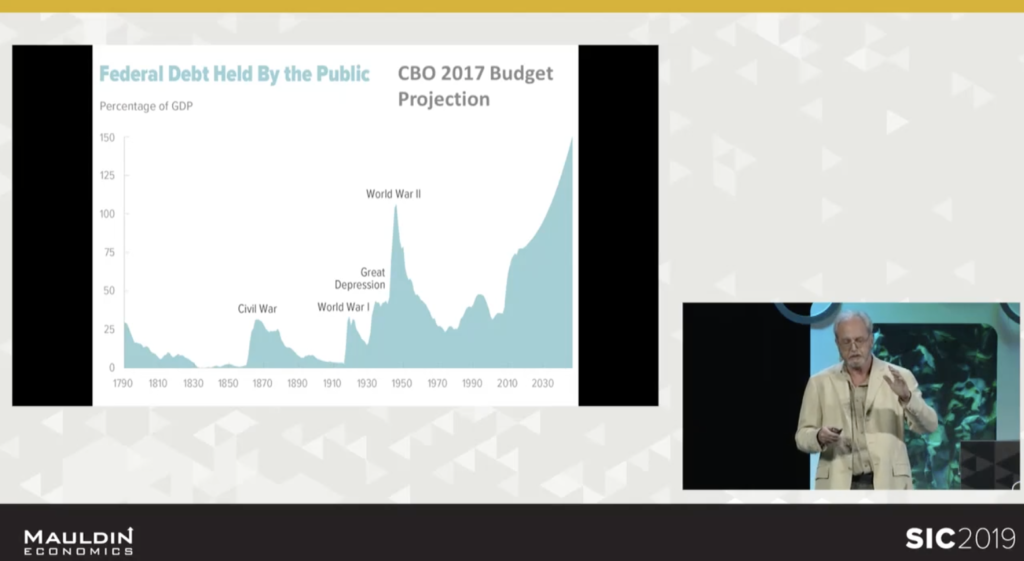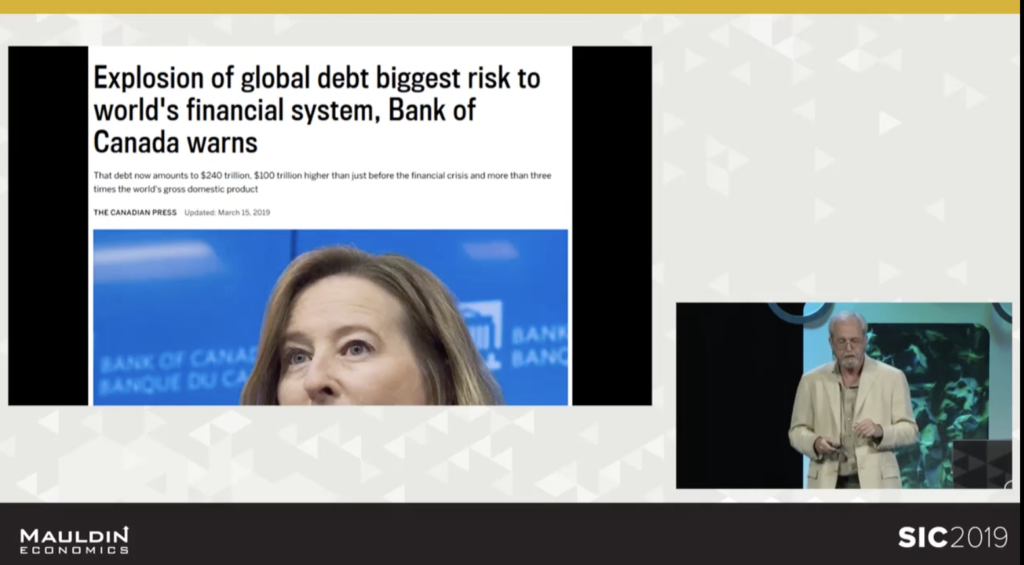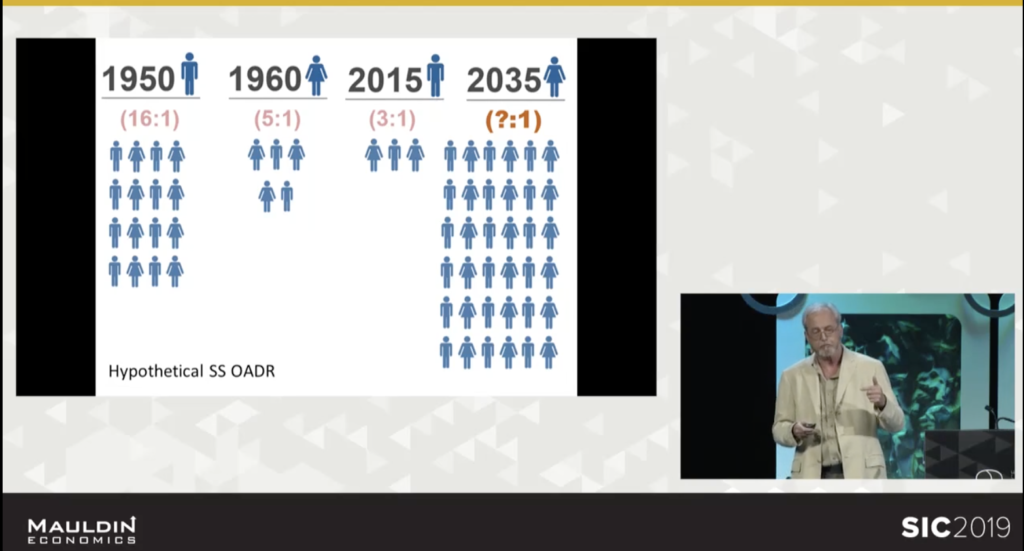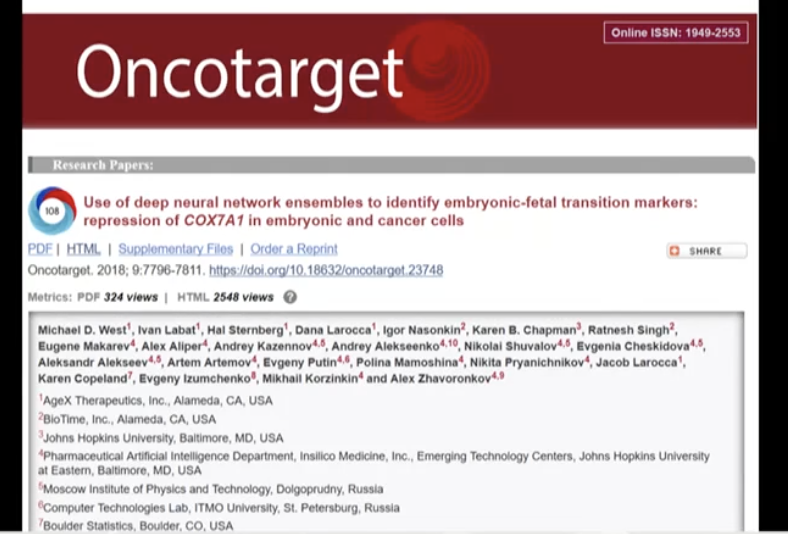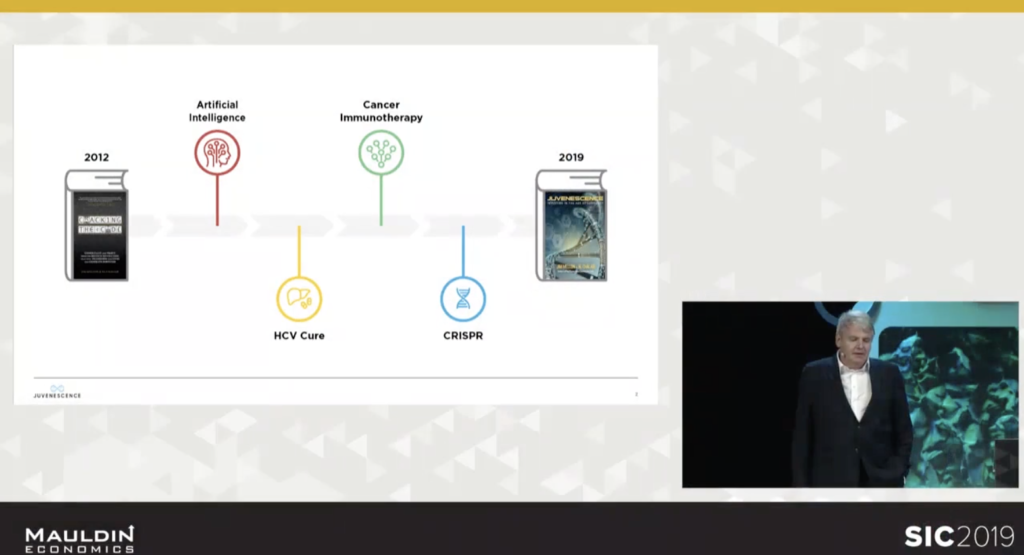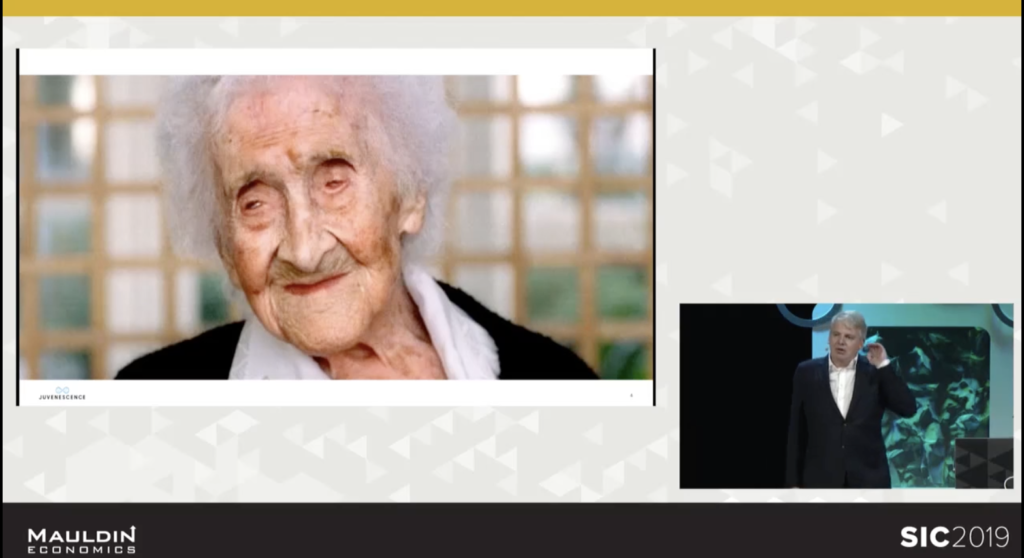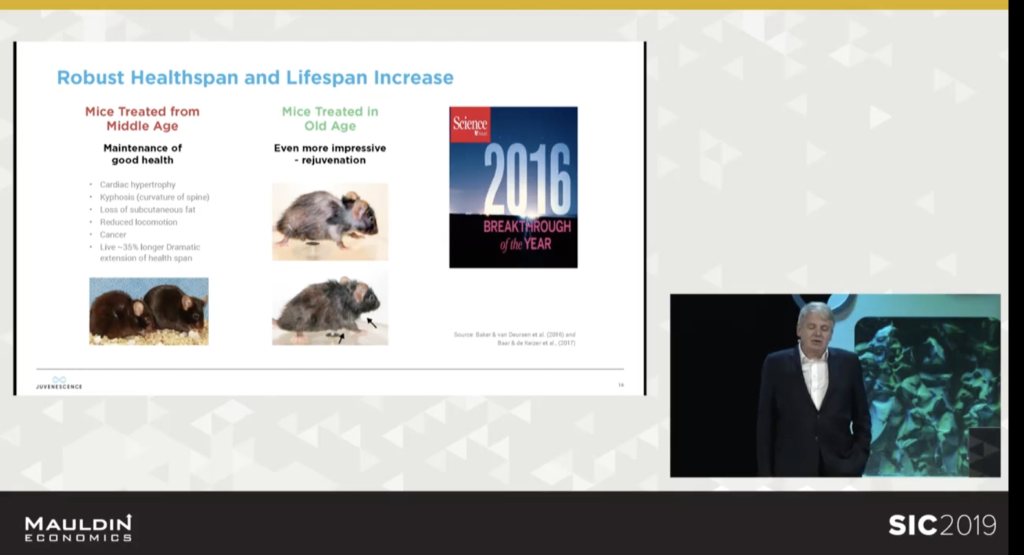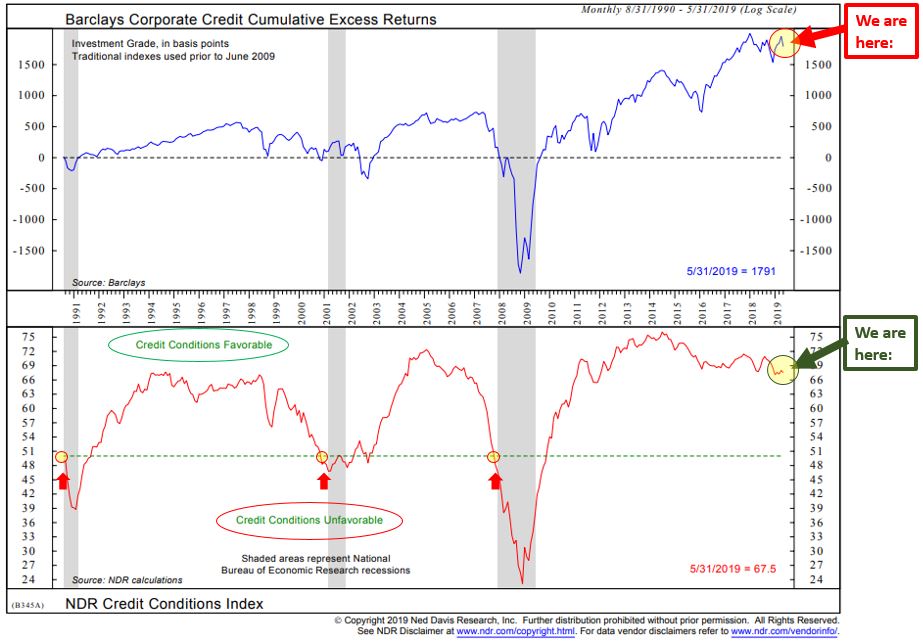“As for the markets, here’s the truth. The global ex-USA stock market index this cycle failed – failed! – to make a new high. It came close but never managed to take out the prior cycle high in 2007. And it is still down 15% from this cycle’s peak, even with the recent rebound.
Now, as for the USA, let’s keep in mind that once you strip out the FAANGM stocks, the S&P 500 has managed to generate the grand total of a 6% average annual advance in the past six years. That’s it! With all the ‘animal spirits’ from the Trump win, all that ‘deregulation,’ and the massive debt-financed tax cuts in the last half of that six-year period, this is all we get?”
– David Rosenberg, Breakfast with Dave (June 11, 2019)
I hear you, David, but we active investors sure do feel about as popular (well, unpopular) as the value managers felt in the late 1990s. At the top of the tech bubble in early 2000, tech stocks represented 46.5% of the S&P 500 Index. Today, Facebook, Amazon, Apple, Netflix and Google represent 11.4% of the S&P 500 Index. Add in Microsoft’s 4.1% index weighting and you get 15.5%. Compare that to the 200 smallest stocks in the S&P 500 Index and you begin to get a sense for the level of risk concentration that has crept in. The collective price-to-earnings (P/E) ratio for these six stocks is approximately 50. Compare that to an also-elevated trailing 12-month P/E on the S&P 500 Index of 21.41. It sure feels like 1999 all over again. But for now, nothing to see here… Hat tip to Rosenberg.
The last four posts have been in the downer camp. Dr. Lacy Hunt, David Rosenberg, William R. White (former Chief Economist at the BIS – the central banker’s central bank) and famed investor, Felix Zulauf, pretty much came to the same conclusion. We have issues: we sit late cycle and risk is high. You’ll find a short “bottom line” summary of their SIC presentations and a link to each OMR post below.
But let’s take a happier path today. A story of science, aging, youth and opportunity. I dare say, I’m a believer. I’ve seen too much evidence and have great respect for some important individuals in my network not to believe that the path ahead and investment opportunities will be great. Think Amazon, Netflix and Google in the “it’s hard to understand what they do and how they will make money” early days.
So grab that coffee, find your favorite chair and read on. Today’s piece is uplifting and full of hope. I share with you my summary notes from the “Investing in the Age Reversal Revolution” panel at Maudlin Economics’ 2019 Strategic Investment Conference. Click on the orange On My Radar button and you’ll link through to the full piece.
If a friend forwarded this email to you and you’d like to be on the weekly list, you can sign up to receive my free On My Radar letter here.
Follow me on Twitter @SBlumenthalCMG
Included in this week’s On My Radar:
- Mauldin SIC 2019 – “Bottom Line” Summary
- Mauldin SIC 2019 – Panel Discussion: Investing in the Age Reversal Revolution
- Trade Signals – The Two Most Important Signal Charts (To Keep On Your Radar)
- Personal Note – Happy Father’s Day
Mauldin SIC 2019 – “Bottom Line” Summary
Following is a quick “bottom line” summary of the last four newsletters: Lacy Hunt, David Rosenberg, William R. White and Felix Zulauf. If you are up-to-speed on the series, jump to the next section.
Part I: Lacy Hunt, Ph.D. – What’s going to happen?
- I [Lacy Hunt] think we are going back to zero bound (Fed Funds Rate to zero percent). Because we expect velocity to fall and we are concerned that we will be stuck in a quagmire with a zero percent bond for some time. Yield curve will be a lot flatter. His fund has greater than 20-year duration.
- It will be ugly economically.
- We are not going to get growth. We are not at the end of the declining rate cycle… we haven’t seen the low in yields. He favors investing in long-term government bonds for total return.
Part II: David Rosenberg – What’s going to happen?
Rosie argues that recession is coming, rates are heading lower and we will move to even more unconventional Fed policy. He recommends the following asset classes will outperform (see cartoon below) and suggested that the 10-year Treasury may earn a total return of more than 11% over the coming 12 months. He also likes quality dividend payers and going long volatility. For non-geeks, that is a bet that volatility will pick up to the downside (it will get very bumpy) and a way to play that for profit is to invest in the VIX. My dad would say, “A play that is not for the faint of heart.” He sees a future “Debt Jubilee” where debt gets monetized somehow. Then inflation.
Part III: William R. White – What’s going to happen?
“In the end the only way out of this mess is inflation.”
Bill says the central bankers’ policies are fundamentally flawed and their flawed theory has led to flawed policy, both before and after the last crisis, and he believes that their flawed policy is going to lead to the next crisis.
He said we’ve had non-inflationary boom and, in the next crisis, predicts we are going to have a “debt deflationary bust, but what that might morph into is high inflation or even hyperinflation.”
The Fed’s (and other central bankers’) capacity to respond is now significantly reduced.
- Last time, interest rates were much higher. Now the interest rates are pretty close to zero in most places and are actually negative in many others.
- The size of the balance sheets are much larger: In the United States, the Fed’s balance sheet is 20% of GDP; in Europe, the ECB is 40% of GDP and in Japan, the BOJ is 100% of GDP.
- There may still be room but it’s going to be much more limited room due to the degree to which sovereign debt ratios in the advanced countries have ballooned.
- The Fed’s “crisis resolution tools are inadequate.” The last time around, the central banks reacted in the right way. Now, “Dodd-Frank has got six separate provisions in it that will prevent the Fed from doing next time what they did the last time.”
- When you get a crisis, there are three phases. There is crisis prevention, then there is crisis management, then there is crisis resolution. Crisis resolution comes down to — we’ve got a big debt problem.
Bottom line: The debts are going to have to be restructured, written off, and then we move on. The day for simplistic notions, in my view, are over. We can try them again and again and they won’t work. The 10-year yield is headed lower. But I do worry about the fact that at the end this is not sustainable, there will be a growing sense of the danger of fiscal dominance and unwillingness (incapability of the Fed to resist…) this will show up in inflation down the road. In the end, the only way out of this mess is inflation…
Part IV: Felix Zulauf – What’s going to happen?
Podcast link: If you prefer, put on your sneakers, plug in your headphones and go out for a walk. You can listen to the full presentation via podcast here.
Felix says, “When I look at markets, I first start to create a long-term big picture. I look at structural trends in economics, in demographics, in politics, etc. etc. And then I try to analyze the business cycle and were we sit in the cycle.”
- What is not well understood today is demographics. I do not know of any econometric model that factors demographics into the model. They should be. I don’t know why. They have their models and they do not adapt.
- The demographic trends in the OECD-member countries plus China, Brazil and Russia, age group of 0-64 year-olds, has gone from gaining 25 million every year from the 1950s to the early 1990s, to gaining 14 million in 2008 (the last time we had a crisis), to zero growth in 2018 and this year it will be negative at -1.7 million. It then declines to -12 million (estimate) by the year 2030 and stays there until the early 2040s.
- The demographic picture is negative. Since growth in economies (“GDP”) equals Population Growth times Productivity, the negative population growth means the overall growth picture is not strong.
- Since our economic system is built on growth, we need growth for the system to survive. Especially given the high level of indebtedness.
- So, when the pie doesn’t grow much, all of a sudden you have to fight for market share, and that’s what comes up in trade wars, currency manipulation and protectionism.
- Then we come to the business cycle – it’s late cycle and slowing. I saw the slowdown coming in late 2017 and put out in my publication to my clients an expected slowdown into the second half of 2019. And we are pretty much on track.
- The tariff and trade problems are just compounding the slowdown we are seeing.
Bottom line: The slowdown should eventually impact markets. The rally from the December low is over. On December 27, I sent out a report to my clients saying this is the low. Then on May 2, I sent out a note “new sell signal.” I think we have started the second decline in this bear market that was interrupted by a nice rally.
What to watch: The key is the Fed. If the Fed changes policy quickly and this weakens the dollar, we could have an extension of the business cycle. And that will be an investment decision I will have to make in the second half of this year. It depends on what they do…
Zulauf added, The bear market from 2020-on will be a very different animal than the bear market we had in 2008. I don’t think we’ll see a waterfall decline; I think we are in for a multi-year bear market with large swings in the stock markets. We live in a time where authorities will come in and they will buy stocks, they will buy the market and we will have a very volatile environment. We do not go flat-ish, we get wide swings up and down with no progress. We’ll just end up earning the dividend yield. This is very different from the environment over the last 10 years. You could have been a passive index investor where you buy-and-you-sit-and-you-hold and that game worked marvelously for you. I think that game is over. I think you have to be a market timer to play the medium-term swings… the mini cycles I expect. And you have to be a good picker of stocks and sectors. Because what will be lacking is economic growth and profit growth. We will have margin squeezes in the corporate sectors due to social pressures. More of the profits will go to the workers and less to the shareholders. And when you have a lack of profit growth, you need to pick sectors and companies that will have profit growth.
Mauldin SIC 2019 – Panel Discussion: Investing in the Age Reversal Revolution
I believe you will walk away from this section with a sense of optimism and see a few opportunities. It’s about advances in medicine and biotech, and what that means to your health and longevity. I’ve talked to John Mauldin about this for years and as with most things, he is generally ahead of the curve. I’ve had my doubts but after a few very good investment knocks on the head, I’m starting to see the bigger picture.
Following are my high-level notes. Dr. Mike Roizen from the Cleveland Clinic presented first. In 2007, Dr. Roizen was named the Chief Wellness Officer (the first such position in a major healthcare institution in the United States) for the Cleveland Clinic, and Chair of its Wellness Institute. Here we go:
Dr. Mike spoke about the switches in your body you can control, which ones you can turn on and off.
- Stress management changes which of your genes are turned on. With stress, we produce inflammatory proteins. That’s the bad stuff.
- Anyone can do this… you can do it with mediation. And what they found in studies is that when you turned on genes that produce anti-inflammatory proteins, you control the good stuff and the bad stuff and thus you control your longevity.
Since 1860, we’ve been on a straight path of gaining 2.5 years of life every 10 years. If you have children or grandchildren under the age of five, with no change in this trend, a five-year-old today will live to 105. However, we expect that trend to break higher to a much longer life expectancy. And it is very possible that by the year 2035, you will be able to be half the age you are now physiologically.
The Cleveland Clinic got started because of a chart Mauldin posted years ago that showed the Components of Federal Spending in 2008. Dr. Mike is Mauldin’s doctor and also Oprah’s doctor.
The cost of health care in our system is out of control. In the next chart, the blue line is everything non-health (as a percentage of GDP) — things like defense and social security. The red line is everything Medicare-Medicaid, etc.
Most of the rise in the slope comes from an aging population but the chart does not account for the growth in chronic diseases like Alzheimer’s. That looks like this:
Read the yellow highlight in the next chart…
If you factor in the cost of chronic disease, without any change in the population, we will spend five to seven times more by 2050. So, by the year 2024 we will have to double marginal tax rates to cover the increased costs of chronic care.
What we know is 100% of the income inequality in the U.S. is due to increased cost in medical spending and 75% of health care costs are for the care of chronic diseases. This will force everyone to spend more on healthcare unless something is done. [SB here: talk about social stress and unfairness… Dr. Mike is saying there is hope because there is much we can do to control this.]
- The Cleveland Clinic said, “Can we stop this?” and they used their 101,000 employees to test their theory. We said, can we do it?
- What really matters to chronic disease?
- Mike looked at the Medicare database and the Nurses’ Health Study and other research and found that if you do six behaviors, you have only a 10% to 20% risk that everyone else has: the risk of chronic disease.
- Unfortunately, the nurses that should know best, only 4% of them do even five of the six behaviors. Those that do it have a 90% reduction in chronic disease compared to everyone else. Men were worse, 87% reduction over the 18 years of the study but only 1% of the men did the behaviors.
- Why is care so expensive in the U.S.? Because only 2.7% of adults do only four of the six behaviors. And if you look at people entering Medicare, only 0.6% do four of the six behaviors.
So the Cleveland Clinic said, “How do we get more people to do 5 of the 6 healthy behaviors?” And being a capitalist organization said, “Let’s pay people to stay healthy.” What they found is that the people that do five of the six behaviors get results. Something Roizen called the “6+2 Normals.”
- Blood Pressure less than 130
- Body Mass Index 21 to 29.9 or a waist size less than one-half your body height
- Normal Fasting Blood Sugar: Less than 107 or HgBA 1C less than 6.4
- LDL / Cholesterol less than 130 or less than 100. Now, less than 100 or less than 70 is recommended
- No cotinine tobacco end products in urine
- Stress Management Program completed
We learned that stress management is very important. We started in 2008 and on the next chart, you don’t see the first two years because actually we lost money on our wellness program. But we’ve been saving roughly $170 million in the last years on our 101,000 employees compared to our chief competitor, the Mayo Clinic, or what the average in the United States would cost.
How many of our employees were able to get to 6+2?
- In 2008, we were exactly the same as the 47-year U.S. national average, roughly 6% of our Americans had the 6+2 normals. We had exactly those numbers when we started our Chronic Care Program.
- By July 2017, 40% of our employees reached 6+2 and 63.8% of our employees participated. By the end of 2017, more than 42% reached at least 5 of the 6 and 67% of our employees are in the program.
- Today, 69% of our employees participate. This is totally doable!
If you look at this since 2008, the average cost for healthcare per employee in the U.S. has increased $7,000 per year over the 10-year period. The Cleveland Clinic’s cost per employee has only increased by $800 per year over the same period and it has been stable since 2013.
Think about what that savings means for a $30,000 per year employee vs. a $150,000 per year employee. If the country did what the Cleveland Clinic did, 100% of the income equality would be solved.
Why does it work?
- Because we’ve been treating the illness in medicine rather than turning off the faucet of chronic disease. It is much cheaper to turn off the faucet.
If you did this for the country as a whole, we wouldn’t have a budget problem.
- Healthcare would be about 7% of GDP vs. over 15% where we are today and we remain on a very bad trajectory.
Getting to 6+2 Normals is the most important thing you can do for:
- Your country
- Your company and those you serve
- Your family
- YOURSELF
Dr. Roizen disclosed his conflicts of interest with a smile… he is the author of the following books:
He said, “Aging, of course, is a global concern.” Following is a popular magazine in Brazil. He noted with humor that he’s been on the cover of this magazine six times. That’s him in the upper left hand corner… and said, “If you are a guy, you probably didn’t see me.”
Bottom line: You will learn that you can reboot your body and keep it young. We know how to prevent 80-90% of chronic disease based on our work with Cleveland Clinics 101,000 employees and their dependents and nine other companies also show you can radically and sustainably increase engagement and decrease healthcare costs. We also know how to prevent 80% of dementia.
The most important thing you can do is manage stress. Here are the things you should do:
- Manage stress – have friends and purpose
- Do four components of physical activity
- Do “Speed of processing games” like Double Decision and Freeze Frame (games)
- Eat salmon and ocean trout or 900 mg of DHA
- Avoid SSSSnake oil Foods
- Give sleep respect (go to bed early and get eight hours) – it is the length of sleep that determines your ability to get rid of waste, waste is what attracts inflammation in your brain so the longer you sleep you get a little dehydrated you open up some pathways and get rid of waste.
- Avoid toxins
- Drink coffee (no additives) and eat nuts
- Take the Fab 8+ supplements [SB here: I googled it and found Dr. Mike’s 9 supplements here. I’ll be downloading and listening to the interview on a walk this weekend.]
- Enjoy an infrared sauna for 20 minutes four times each week
Here is his list of the Fab 8:
He focused in on aspirin as it is a topic most are familiar with. [SB here: something I was told by my doctor was a good thing at age 40 but I stopped after hearing maybe it wasn’t so good.] Here are the results:
He noted a few studies have come out in the last three months saying no benefit to going with aspirin. He then noted that the data is misleading. Both used “intention to treat” analysis. What that means is that there were two groups. One group who is supposed to take aspirin and one group who is not to take aspirin during the study. In the aspirin group, 40% of the people who were supposed to take aspirin did not take their aspirin and 20% of the people who were not supposed to take it took aspirin. So the data is not good.
Looked at more correctly, of the takers vs. the non-takers, there was a 47% reduction in first heart attacks and more prevention of a second heart attack. So you have to actually have to know something about the studies. If you take it, there is a real benefit.
Dr. Mike also noted that aspirin taken daily with a bottle of bourbon reduces the “awareness” of heart attacks as well. [SB again: I think I’m back on baby aspirin.]
The panel session was hosted by Mari Kooi. I remember Mari from my early hedge fund days. Mari Kooi is the former CEO and Founder of Wolf Asset Management. Mari ran a fund-of-funds hedge fund and she was as tough as she was great. She authored a private letter to clients, and I was fortunate to be on the distribution list. That letter was appropriately titled “Sopa Piranha.” I do miss reading her letters.
Patrick Cox presented next:
Pat Cox began by mentioning:
- The importance of exercising and strength training with heavy weights trumps just about everything else. Also, traditional video games will help prevent cognitive issues as well.
He went on to explain why soon we will get the opportunity to radically increase life spans. I do my best to “bottom line” via my notes from Pat’s presentation. [Side note: I’ve had many conversations with Pat over the years and can say I’ve become a big fan. He told me one of the best things we can do are squats with weights.]
- Long-term trend in demographics has been and continues to decline. He showed a slight blip during the Baby Boom generation but over the long-term is continuing to go down.
- Demographics are critical for investors – what we should care about is the old-age dependency ratio
- In 1960 there were five payers into social security for every one taker. Today it is less than three to one and it is going to continue to go down
- The older your population, the greater your country’s medical costs
- Another challenge is our level of debt. We are higher than any other time. The difference between now and WWII is that we had the baby boom generation to help pay off that debt. We don’t have that today, we are not going to have it… it is untenable.
- According to the WSJ, Social Security Costs to Exceed Income in 2020, Trustees Say. They add, the trust fund to be depleted by 2035.
- Medicare reserves likely to be exhausted in 2025: U.S. report. The General Accounting Office says “Unsustainable”
- Alan Greenspan says the economy will start to fade “very dramatically” because of the entitlement burden [SB: Mauldin’s “Great Reset” — massive debt and underfunded pensions and entitlements.]
“If something can’t go on forever, it will stop.” – Herbert Stein
- The problem is aging and disease-related healthcare costs. We can’t not go on and charge the fewer number of people (workers) for this accumulated burden (the social programs are already half of the U.S. budget)
- Biotech is making fast progress. What we have is the potential to expand health spends.
- We have a very good chance of being half our age in 15 years. [SB here: think about that one for a second, or more… hope Pat is right.]
- Pat says, you have to stay healthy now and make it to that point
- And this will change the path of the payers into the system vs. takers from the system… curing the dependency ratio
We have the technology today to take something called “brown fat” from a young animal and put it in an old animal and the animal becomes younger. If we take the same from an old animal and put it in a young animal the animal becomes older. They change health states.
- We have the technology to do this today. All that is needed is regulatory permission.
He proceeded to go a bit bio-geek on us but his clear message is science has made significant progress in identifying genetic markers and there exists the ability to influence those markers – think how far we’ve come in short years in better understanding the human genome.
Three quarters of your genes come from your mother. Mitochondria are immortal and they give commands to the central genome.
- Progress is coming at a fast pace because it has to happen
- Aging demographics is driving this…
- We can do it, therefore we will…
Mari next introduced Jim Mellon. As she did she made a great point… don’t focus on the science of 10 years ago, focus on the fast pace of progress. Breakthroughs are happening quickly.
Jim Mellon presented last:
He began, “It my job to convince you that what is ahead is the biggest curve in the history of stock markets because of what is going to happen in terms of extending our lifetimes.”
- The science is here and now, not 20 years hence
- And it applies to every single person on the planet
- It’s about living extra years in a healthy state. The technology to do that is with us now. Some primitive but it is going to develop quickly.
- Not only will you live longer and healthier, but those who invest early will be able to live longer in an abundant way. The opportunity is early and great
Jim has written two books on this:
- Cracking the Code in 2012
- Juvenense in 2019
When he wrote Cracking the Code, the following four things did not exist:
- AI – enabling new discovers and progress. What took years now takes weeks.
- The Hep C virus is now completely cured – Gilead Pharma, who solved for this, has made billions of dollars from this.
- Cancer Immunotherapy has come to the fore and will be a $100 billion business next year
- CRISPR forms the basis in the new gene editing and vital in the progress for expanding long healthy life spans. Papers were not even published seven years ago.
[SB here: I’m personally invested in a company that may have the cure for Parkinsons Disease and another that is doing great work with cancer therapy using genetic markers to deliver targeted treatment. CRISPR is a game changer.]
What is going to happen in the next seven years nobody really knows but we can make guesses… and it is going to be greater than the cumulative gains from the above four advances made since 2012
Today, for the first time, our cohorts on the planet can be bio-engineered with the manipulation of the pathways of aging to live longer and heathier. I can say with reasonable certainty as a hard-headed investor, we will experience life expectancies at birth, within 30 years, of 120 years of age.
- Which will change everything in the trajectory of our lives
- A massive social impact, a medical impact and an investment impact
Many people know the oldest person on record lived to 120 years of age. She gave up smoking at age 117 and she attributed her long life to having very little to do with men.
What is common about all centenarians is that they all have geroprotective genes — some genetic factor that stands that enables their long life. It’s not about olive oil or living in a blue zone. It’s in their geroprotective genes.
- Essentially, CRISPR will enable us to take that gene trait and adjust the DNA on those of us who don’t have that trait and we will live longer
- This is something that happens in nature and CRISPR will enable the transfer of that trait to those who desire it
- This is some way off
- The science today will keep us to 105 or 110 for all of in this room
What we do have today is the ability for the restoration or repair of the wear and tear that comes with life. That keeps us alive longer.
The new science is coming and coming quickly. We need to stay on a healthy bridge to get there. The technologies will become apparent to a wider breadth of society in about 10 years time.
- So do what Dr. Mike is recommending and live a healthy life
- And you will have a chance for living a long healthy life vs. the life timeframes we see today
- He mentioned Rapimisum is very good and he uses it for his large dog. It has been proven to extend a large dog’s life by 40%. He sees Rapimisum as one of the tools in the arsenal to keep us alive longer (Restol Bio is in trials to demonstrate the immune system can be boosted)
- Doesn’t recommend caloric restriction. Much touted as expanding your lifespan. It may add 5% to your lifespan but that makes for a very long un-fun ride, so he doesn’t recommend that idea
- NR is interesting.
- Treated with a drug to remove senolytic cells not only did it stop the aging it reversed the aging in a matter of weeks. Senolytic cells are related to what we see as symptoms of aging. Frailty, lack of robustness, etc.
- Judy Campesi of the Buck Institute felt that removing it might be important. In study: Removing senolytic cells in mice has not only slowed the aging process it has reversed the aging process (see picture of mice below). The old mouse turned back to a middle aged mouse in a matter of weeks. So there is a possibility there is something here for humans. In early trials: keep senolytic drugs on your radar.
- There is a company called Unity that is in this field and is public with a drug in phase 1 or phase 2 trial for age-related macrodegeneration.
- So we are here and now with this… this is not just science fiction
- Ultimately gene therapy is ahead for us
Jim runs a fund called Juvenescience. They’ve raised over $100 million. They have 18 projects relating to aging. They don’t know which will win but believe at least two or three of them will be very strong. At some point in the next year they will take their company public. They look for things where they believe they can make a minimum of 10x on their money. And they look for scientists entrepreneurs who they can partner with where they can add value.
Jim added that four years ago they started a company called Biohaven with $3 million. It is now public with a net worth north of $3 billion in market cap. They have an approvable drug that will be on the market next year.
One company Juvenescience likes very much is
- Lygenesis, Inc. They use a technology to help people with liver disease to regrow the liver within the patient’s body and have had 100% success in animals
Bottom line: Jim concluded with an example of compounding to make the point of how quickly longevity science is progressing. We should take notice. This is the greatest investment opportunity of all of our lives, he said:
- Not only will it transform our physical lives it will transform our personal economic lives if we get into it early.
Mari began the Q&A. She said with certainty, “It’s about living longer and living younger.”
Mari asked the question as to how long we will live:
- Mike answered, “If you make it to the year 2030 I can say with a 90% certainty that you can live to 110. Likely a person alive today will live to 130.”
- Jim Mellon, “It will be a matter of routine people living to 100.” He added, in 1917, the King of England sent a letter out to the 24 centenarians alive. Today the Queen sends out a letter. There are 19,000 people that get that letter. By the year 2040 at a minimum there will be a half a million people getting that letter.
- Mike, “In 1900, you were thought of aged and done at age 35.”
- Mike, “Longevity has a strong financial benefit to society as well.”
Mari met with a leading scientist last week and asked if he was taking the standard list of supplements that Mari is taking, and he said he is not. Asked why, he answered,“Because in two or three years we will have the complete reversal of aging.”
This is not 10 to 20 years out. This is now.
Trade Signals – The Two Most Important Signal Charts (To Keep On Your Radar)
June 12, 2019
S&P 500 Index — 2,886
Notable this week:
NDR Daily Trading Sentiment Composite and NDR Crowd Sentiment Poll (weekly) continue to signal “Extreme Pessimism.” Such readings are short-term bullish for equities. Further, the Equity Trend Signals remain bullish, as does the Ned Davis Research CMG U.S. Large Cap Long/Flat signal. High Yield is back in a buy signal. The Zweig Bond Model remains bullish on high-grade, longer-duration U.S. bonds. The Gold trend signals remain bullish. You’ll find the latest recession watch charts below. Notable is the Economy and the Yield Curve chart. It inverted in May. Risk of recession within the next six months is increasing.
The Two Most Important Signal Charts (To Keep On Your Radar):
The economic expansion reaches 120 months or 10 years of age at month-end. That ties the longest expansion in U.S. history that ran from 1991 to 2000. We sit late cycle. Equity markets are at the second highest overvalued level in history. The level of corporate debt is higher than levels reached prior to the last two recessions and the quality of outstanding debt has never been worse. One-third of the companies in the Russell 2000 Index are not making money. They are dependent on debt to survive. 50% of investment grade debt is rated BBB — just one notch above junk bond status. I believe the next recession will see record bankruptcies and record investment opportunity in the High Yield junk bond market. The HY market declined over 40% in price during the Great Financial Crisis (2008). I suspect it will decline more than 60% in the next recession. Yields will rise from 6% today to more than 20% when prices reset and the investment opportunity after the recession will be epic.
Until then, I believe there are two important charts that can help us position for the opportunity. The first is simple. It looks at the price trend of a large and popular HY mutual fund. The second looks at lending conditions via the NDR Credit Conditions Index. When favorable, there is available liquidity in the system for companies to borrow/refinance. When unfavorable, liquidity dries up and bankruptcies follow. As Warren Buffett famously said, “You only find out who is swimming naked when the tide goes out…” The price trend in the HY market is an excellent leading indicator for the stock market and the economy. When the price trend turns down and credit (liquidity) conditions become unfavorable, that’s a toxic one-two punch. Defaults will rise to record levels. Together, both indicators can help us better understand the timing of the next default wave, help manage our risk exposures and importantly help us to better time the re-entry opportunity that will present on the other side. Especially important today as we sit late cycle, with record high corporate leverage and the lowest covenant quality in history (I explain Covenant Quality below).
Bottom line: Investors hungry for yield have been willing to tolerate less (or looser) protections to the point where they are now weaker than they were even before the Great Financial Crisis. This excess liquidity has enabled companies to borrow (record indebtedness) and at terms favorable to them and least favorable to us investors. Liquidity will dry up in the next recession and defaults will spike. Thus, my belief these next two charts are the most important charts for you and me to keep on our radar.
- HY Trend Chart (50-day MA: Buy signals above green line, Sell signals below green line)
- Note the price decline in the 2008 recession was more than -40%. Note too the gains when above the 50-day MA line. Also note that there are a number of whipsaw trades along the way, but avoiding the big declines has more than paid for the whipsaws. Given the poor quality and size of the HY market and the 50% of near junk BBB-rated bonds in the high-grade corporate sector, the coming default wave will be epic and the investment opportunity it will create, like 2008, will be exceptional. Keep your forward-looking eye on whether the current price is above or below the green trend line. Sell signals when price crosses below.
- The NDR Credit Conditions Index
- Focus on the bottom section of the chart. Currently lending conditions remain favorable. Pay close attention to the zero line (horizontal green dotted line). Above the line reflects “Favorable” lending conditions. Below the line reflects “Unfavorable” lending conditions.
- Note the dip below zero prior to the 1990, 2001 and 2008 recessions (small red arrows).
Covenant Quality: Moody’s publishes a covenant quality index that measures the strength of covenants (bondholder protections, such as leverage requirements, ability to make payments to shareholders, ability to borrow more, seniority of lenders claims, etc.) on a scale of 1 (strongest) to 5 (weakest) over the prior two quarters. It rose to 4.12 at the end of Q1 2019. This is the weakest reading on record, according to Moody’s.
Conflict of Interest Disclosure: Steve Blumenthal has been trading the trends in the HY bond market since the early 1990’s. He is the portfolio manager of the CMG Managed High Yield Bond Program and the portfolio manager of the CMG Tactical Bond Fund. He uses a different trend signal than the one reflected in the HY chart above. The signal he shares on the Trade Signals dashboard is the signal he has used for many years. As a general rule, he believes the 50-day MA is an effective indicator to indemnify the predominant HY price trend.
Not a recommendation for you to buy or sell any security. For information purposes only. Please talk with your advisor about needs, goals, time horizon and risk tolerances.
Click here for this week’s Trade Signals.
Personal Note – Happy Father’s Day
Wishing you a fun weekend. I am looking forward to some golf on Sunday with Brianna and my nephew, Dan. The boys are away on internships but Brie is home for the weekend for which I am very happy. Love spending time with her.
The U.S. women’s national soccer team plays Sunday morning at 11:30 am ET. Susan flew to France with a contingent of youth soccer coaches and will be at the game. Great fun! OK, back to the USWNT for a second. I have to say the over-celebration did not sit well with me. I understand being happy and why it is important to celebrate but, dear God, 13 goals and each celebration bigger than the last. I see my old man creeping into me. “Humble is best…” Why put an unneeded extra target on your back. Or maybe it is my college coach, Walter Bahr, coming through… We spray painted our cleats black to hide brand logos and wore nameless blue and white jerseys. One team.
So Sunday will be an all-world day. The USWNT game in the morning, golf with Brie in the afternoon and the U.S. Open on TV to close out the day (maybe a nice ocean caught salmon on my plate since Dr. Roizen is in my head)…and I saw nothing about a problem with IPAs or red wine… A happy Father’s Day awaits.
Wishing you and your father a wonderful day!
Best regards,
Stephen B. Blumenthal
Executive Chairman & CIO

